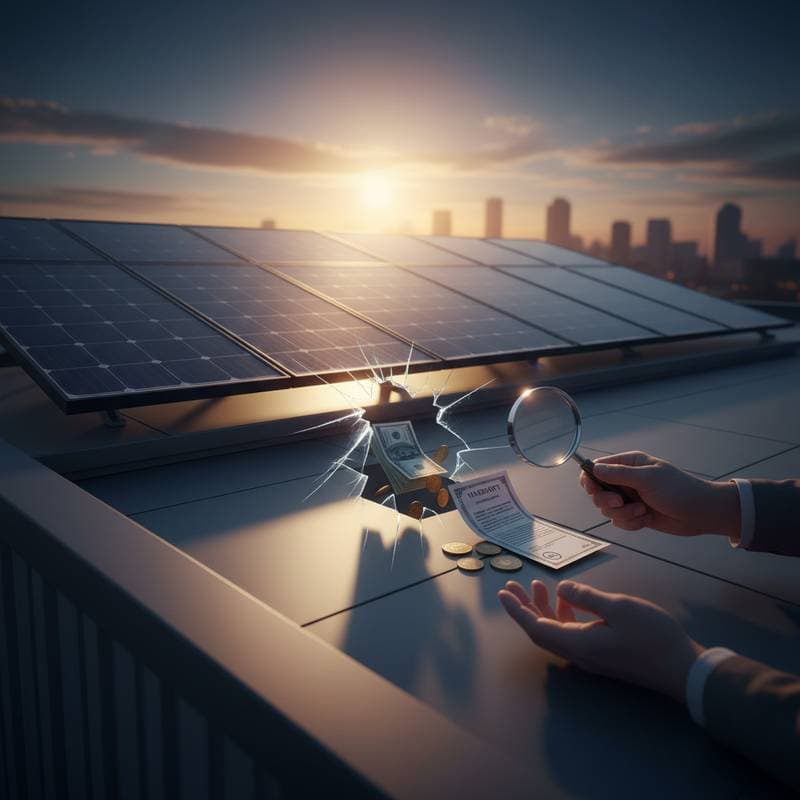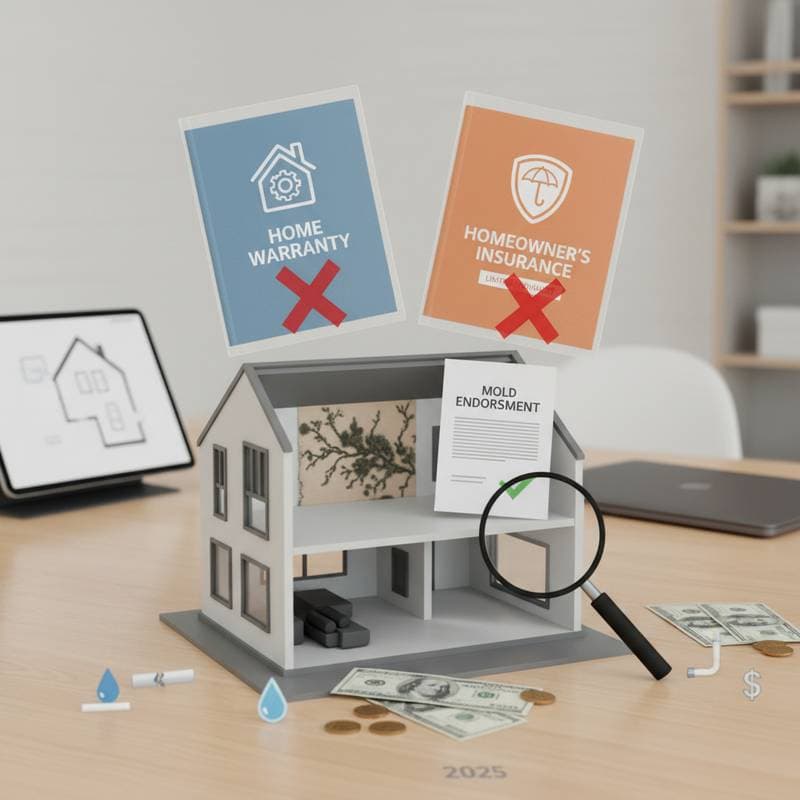Who Pays for Solar Panel Roof Damage
Solar panels offer long-term energy savings, but they can sometimes lead to roof issues over time. Understanding who bears the financial responsibility for repairs helps homeowners avoid unexpected costs and maintain their investment. This guide examines the key factors, from installation errors to insurance coverage, and provides steps to resolve damage effectively.
Summary Box
National average cost: $1,200 to $3,500 to repair roof leaks or shingle damage under or around solar panels
Typical range: $800 to $5,000
Low end: $500 for minor flashing repair
High end: $10,000 for full roof section replacement with panel removal and reinstallation
Time to complete: 1 to 3 days for roof repair, plus 1 to 2 additional days for solar removal and reset
DIY or Pro: Professional only for roof and electrical work
ROI or resale impact: Poor repair or unresolved leaks can reduce home value by up to 10 percent and void solar warranties
Updated: March 2025
Cost Breakdown
The following table outlines common expenses associated with repairing roof damage related to solar panels. Costs vary by location and project specifics.
| Item | Unit cost | Typical quantity | Line total | Notes |
|---|---|---|---|---|
| Roof inspection | $150 - $400 | 1 | $150 - $400 | May be credited toward repair |
| Solar panel removal and reset | $200 - $500 | per panel | $1,000 - $3,000 | Needed to reach damaged roof area; assumes 5-15 panels |
| Roof flashing and sealant | $5 - $10 | per linear foot | $250 - $600 | Around mounts and penetrations; essential for leak prevention |
| Shingle or tile replacement | $4 - $12 | per square foot | $400 - $1,200 | Depends on roof type, such as asphalt versus clay tile |
| Labor (roofing) | $60 - $120 | per hour | $600 - $1,800 | Skilled labor from licensed roofer; 10-15 hours typical |
| Disposal fees | $50 - $150 | per load | $50 - $150 | For old roofing materials or damaged hardware |
Add-ons and allowances:
- Structural repair if mounts pulled loose: $500 - $2,000
- Electrical check or inverter test: $150 - $300
- Permit or inspection fee (if required): $100 - $250
These figures represent 2025 estimates based on current market rates. Always obtain multiple quotes to confirm local pricing.
Factors Influencing Repair Costs
Several elements determine the total expense of addressing solar-related roof damage. Larger installations with more panels require additional mounts, which increases removal and reinstallation fees. For instance, a system with 20 panels might add $1,000 or more compared to a smaller setup.
Roof material plays a significant role. Asphalt shingles repair more affordably than slate or tile, which demand specialized tools and labor. Site challenges, such as steep roof pitches or access issues on multi-story homes, extend work time and elevate costs by 20 to 50 percent.
Regional labor markets also affect pricing. Urban areas with high demand for skilled roofers charge premium rates, while rural locations might incur travel fees. Unexpected discoveries, like underlying rot or the need for decking replacement, can double the budget, emphasizing the value of thorough initial inspections.
Assessing DIY Options Versus Professional Services
Homeowners can perform basic checks to identify potential issues. Examine the attic for signs of moisture or inspect ceilings for water stains after heavy rain. These steps help pinpoint problems without specialized equipment.
However, professional intervention becomes essential for any substantive work. Solar panels integrate with home electrical systems, requiring certified electricians to handle disconnections safely. Roof repairs involve precise sealing of penetrations to meet building codes and prevent future leaks.
Attempting DIY repairs risks voiding warranties from both the roofing manufacturer and solar provider. Most contracts mandate that work under the panel array occurs through approved technicians. Professionals ensure compliance, document the process, and preserve system integrity for optimal performance.
Strategies to Minimize Costs
Coordinating services streamlines the process and reduces expenses. Engage the original solar installer to collaborate with a licensed roofer, avoiding redundant labor charges. This approach can save 15 to 30 percent on combined projects.
Review contracts for warranty protections. Solar leases or power purchase agreements often cover penetration-related leaks for the first 10 to 25 years. Present documentation during inspections to shift costs away from personal funds.
Timing matters for affordability. Schedule repairs during off-peak seasons, such as late fall or early spring, when roofing contractors offer discounts due to lower demand. When soliciting quotes, verify that proposals include itemized scopes, material specifications, removal details, permits, warranties, and timelines.
Compare at least three estimates from reputable firms. Look for inclusions like post-repair inspections and guarantees against recurrence. These practices ensure value without compromising quality.
Determining Financial Responsibility
Liability hinges on the damage's origin, requiring careful attribution. If improper installation causes issues, such as faulty flashing or loose mounts, the solar installer assumes responsibility. They cover both roof fixes and panel reinstallation, often under workmanship warranties lasting 10 years or more.
Roof-specific problems, like deteriorating shingles or underlayment failure, fall under the roofing warranty or homeowner obligation. Standard roof warranties span 20 to 50 years, but they exclude damage from external installations like solar arrays.
Homeowners insurance addresses sudden events, including storms, hail, or debris impacts affecting the roof and panels. File claims promptly with photos and inspector reports to support coverage. Deductibles typically range from $500 to $2,000, but payouts can offset major expenses.
For leased systems, agreements frequently include provisions for installation-induced damage. Out-of-pocket payments apply to wear from aging roofs beyond warranty periods or deferred maintenance. Joint inspections by roofing and solar experts clarify divisions before repairs commence.
Project Timeline and Coordination
Repairs follow a structured sequence to minimize disruption. Begin with a joint inspection, which takes about one day, to assess damage and assign responsibilities. Panel removal follows, requiring one to two days depending on system size and roof access.
Roof work spans one to three days, allowing time for material curing and any required inspections. Reinstallation occurs once the surface proves stable, adding another day. Weather delays, such as rain or high winds, can extend the overall schedule by several days.
Plan ahead by notifying utility providers if electrical work involves the grid-tied system. Clear communication among all parties ensures smooth progression and adherence to safety protocols.
Ongoing Maintenance for Longevity
Preventive care extends the lifespan of both roof and solar system, typically 25 to 40 years each. Conduct annual inspections focusing on mounts, flashing, and seals for early detection of wear. Clean panels quarterly to maintain efficiency, as debris accumulation exacerbates water runoff issues.
Address minor concerns immediately, such as resealing around penetrations after storms. Document all maintenance to support warranty claims. Integrating smart monitoring tools allows remote detection of leaks or performance drops, enabling proactive responses.
Compatible roofing upgrades, like impact-resistant shingles, enhance durability under panels. These measures not only safeguard investments but also boost energy output and home resilience against environmental stresses.
Securing Your Solar Investment
Resolving roof damage promptly preserves the benefits of solar energy, from reduced utility bills to increased property appeal. By identifying responsibilities early and selecting qualified professionals, homeowners mitigate financial risks and ensure system reliability. Take the first step with a professional assessment to protect your home's value and performance for decades ahead.



